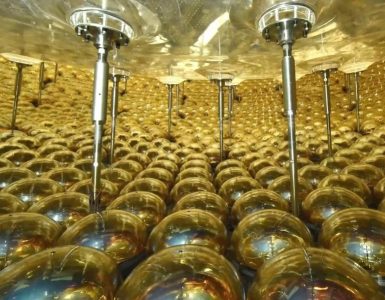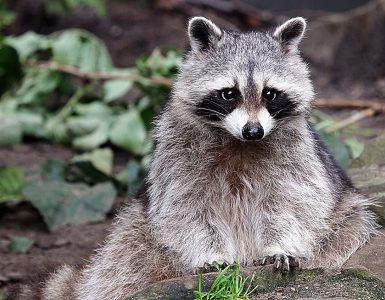by A’liya Spinner
New Age Fishing
The salty sea spray burns Abebi Kanumba’s exposed face as she leans over the edge of the rocking Pelican. She resists the urge to wipe her eyes, keeping her hands locked around a long pole that’s been precariously balanced on the gunwale of the fishing vessel, a finely-woven net dangling from its end and over the rippling surface of the Atlantic Ocean. The light of late morning dances on the water, imitating the flash of fish scales just beneath the churning waves and tempting her to scoop at fleeting shadows with her net. But she holds still and poised, ignoring the pain in her eyes and ache in her forearms. Haddock and cod are not what the Pelican has come fishing for today, and she must be ready at all times.
“Look sharp, I see movement!” Comes the voice of Captain Imamu over the roar of the boat’s engines and the spray of water. She glances up, seeing him standing beside the gantry, sweat glistening on his dark skin from a morning of hard labor raising and lowering the boat’s trawl. Each time the large net has risen empty, an eerie sight no matter how long Abebi serves aboard the Pelican. She will never get accustomed to the empty swaths of ocean surrounding the once abundant coast of Africa.
“There they are!” Another crew member shouts from the bow, pointing over the starboard side as the Pelican draws into range of a floating mass of pale detritus. The loosely-connected mesh of plastic waste bobs on the waves they stir up on approach.
“No wonder the ocean has gone quiet,” Nkechi— a fisherman leaning on a second long pole beside Abebi— says as they near the tangled raft of plastic bags, bottles, and formless debris. “It’s a piece of the Atlantic garbage patch.”
“The garbage blight,” Captain Imamu corrects. “It’s no better than a parasite, gorging itself on Africa.”
“And what it brings with it is even worse,” Nkechi spits. Abebi agrees with her crewmate, but she says nothing, scanning the water with practiced eyes. Imamu and Nkechi watch too, the latter with his pole-net, and the former with a speargun that he holds over the sparkling sea, poised to strike. Abebi knows that the Senegalian captain has a history with trawlers that long predates the United Nations’ demand that West African boats abandon their hunt for haddock and look for more elusive prey— a prey that Abebi now spots, darting towards the lines of plastic dross that Captain Imamu ties to the bottom of the ship as bait.
With a practiced swing, Abebi twists her long pole, dipping the net into the water and scooping it back out in a single motion. Nkechi does the same, but his net rises empty, while hers thrashes and writhes. With a grimace of effort, she slides her pole back and then shoves down hard on its end in a motion that she’s long perfected; the pale creature tangled in the mesh flies through the air and lands on the deck with a hollow thud.
“That’s the biggest one I’ve ever seen,” Nkechi comments in awe.
“They’re getting bigger,” Captain Imamu replies, putting his boot down on the writhing animal’s tail and skewering it with his speargun. “All it means is easier hunting for us.” He reaches down and lifts their catch by its gills, showing it off to the crew for a moment for them to admire. Abebi feels a tingle of disgust go down her spine; the “fish” is long, pale, and deformed, with terrible, plastic-chewing teeth and bulging eyes. And Nkechi is right— it’s bigger than any she’s ever caught before.
After a moment of observing the monstrous sea creature, Captain Imamu tosses it into a large bin, where it joins a few smaller specimens from earlier that morning. Then he turns away, looking back over the gunwale, at the pale, eel-like shapes beginning to coalesce on the boat. Their modern trawl was useless for catching the slippery fish, which didn’t travel in schools through the open ocean but rather congealed at the surface near garbage patches like the one ahead of them. Rumor had it that wealthy Chinese and American corporations were pouring millions into developing huge machines that could, they promised, destroy the monsters by the thousands in a day— a bold promise that Senegal was eager to see but skeptical about ever being given for free. Not that it mattered much to Abebi; until the completion of their wondrous machines, countries that were used to being the first in everything were limited to the same solutions as the rest of the world when it came to protecting their coasts: poles, nets, and harpoons. All of the nations of Earth had found themselves equally inadequate at fighting this strange, new-age plague.
“Back to work,” Captain Imamu orders. “The United Nations pays by the head.” He taps the deck with the end of his speargun. “And someone haul in that garbage mass. Maybe they’ll leave these waters once they start starving.”
Abebi does as she’s told, turning back to the water and preparing her net to snag either another fish or the edge of the loosely-connected raft. She appreciates the sentiment— that the plastic eaters would leave if the floating islands were taken back to land for proper disposal— but she knows that the plastic in the ocean is more abundant than they could ever clean from the surface. Once the plague of garbage-eaters arrive, they are nearly impossible to send away, the chemical byproduct of their endless gluttony (enabled by genetically-altered stomach enzymes) kills the local ocean, poisoning the fish that once supported honest fisherman like Captain Imamu, forcing them to turn to the United Nations for a meager livelihood, getting paid to clean up the mess made by wealthier countries that all scorned poor Africa until they needed African ships and crew to hunt their bioengineered monsters.
“I hate these things,” Nkechi says, lifting a thrashing net high into the air as he pulls another pale plastic-eater from the Atlantic.
“Me too,” Abebi replies, eyes stinging from the spray of the infested and polluted sea. “Me too.”
The Plastic Crisis
It’s common knowledge that plastic is harmful to the environment— single-use plastics are designed to be quickly used and thrown away, but they aren’t destroyed quite as easily as they’re created. Once it reaches a landfill, plastic waste can take hundreds to thousands of years to biodegrade, and, while it sits there, may leak toxic chemicals into the ground and water of nearby communities, causing a wide array of health issues for residents. Furthermore, as plastic very slowly breaks down, it flakes into microparticles that contaminate tiny lifeforms and soil, which are then ingested by birds, fish, and small mammals and then gradually accumulate up the food chain as these animals are preyed upon by others; since humans are at the top of this food chain, many of these microparticles eventually find their way back to us. Such high concentrations of plastic particulates can cause damage to the intestinal lining, or poison people and animals from within as aforementioned hazardous chemicals and plastic byproducts spread through our internal systems.
But despite the dangers that landfill-bound plastic presents to life around it, perhaps nowhere and nothing is as impacted by plastic waste as the Earth’s oceans. A study conducted in 2015 concluded that there is much more plastic waste in the ocean than formerly estimated— over 150 million tons, with an averaged 8 million more tons added every year. 8 million tons is enough plastic to cover an area 34 times the size of Manhattan ankle-deep in garbage, and, despite recent increases to global recycling initiatives, ocean pollution continues to pile up at an alarming rate; a study published by the Ellen MacArthur foundation predicted that, at current rates, the global oceans would contain more plastic than fish by 2050.
This is the future explored in “New Age Fishing”— one where plastic has overrun global waters and oceanic gyres create huge zones of concentrated waste like the Great Pacific Garbage Patch of today. In this near-future, the “global south” is responsible for cleaning up most of the mess as their waters are choked to death by plastic waste and failed international solutions, similar to how, even in the current day, these countries are paying the price for climate change while being the least responsible, despite the common misconception that most of the plastic waste in the oceans comes from Asia.
“New Age Fishing” explores the unintended consequences of a potential solution: The crux of the story hinges on plastic-eating fish, released into the ocean to combat the pollution problem, but quickly becoming a deadly and invasive species. In this scenario, the capture and destruction of these fish has become a global concern, but once free, introduced species can be very difficult to recover. It’s more fiction than fact, but inspired by recent research into plastic-eating organisms and the history of altering animals or ecosystems to suit human needs. While it’s unlikely that fish with plastic-decomposing microbes grafted into their stomachs will ever be reality, nature’s plastic-eating creatures may hold one of the many keys to combating the plague of waste— in a smarter way.
Plastic Eaters
“New Age Fishing” focused on the introduction of plastic-eating microbes and enzymes into the natural gut flora of existing fish; however, microbes are not the only kinds of natural plastic eaters. Wax worms, too, are being studied for their ability to consume and break down plastic. Between these two (and, hopefully, other species of insects or bacteria) scientists hope to isolate the exact enzymes that enable this decomposition to employ against the plague of plastic waste building up in oceans and landfills.
Natural Cure
The discovery of plastic-eating organisms is relatively new and unexplored in the field of science, as it is limited to a very small number of lifeforms. For wax worms, this unique ability has evolved coincidentally because of their primary diet in nature: beeswax. The molecular make-up of beeswax is very similar to that of polyethylene-based plastics (about 40% of global plastic demand), and evidence indicates that this hydrocarbon molecule is the target of wax worm digestion. The byproduct of this process— ethylene glycol, a major component in antifreeze— is produced when these worms eat both beeswax and plastic, which scientists hope may point to signs that these larvae can survive by eating plastic, and aren’t just chewing through containers in search of freedom, opening doors for their potential ecological deployment.
The second form of plastic-eating organism currently being researched is a species of microbe already found in the Earth’s oceans. Through a recent study, scientists discovered that, when placed in a saltwater tank with nothing but plastic waste, a strand of the microbes that had been genetically-enhanced could survive solely on the carbons that they broke down from the provided plastics. Over a course of five months, the plastic underwent a significant loss of mass as it was slowly consumed by the microbes— a very promising first step. The next phase of research will focus around how to effectively deploy these microscopic organisms in Earth’s oceans, where they already exist but are not yet making a considerable dent in plastic waste.
Invasive Species
On the surface, “genetically enhancing” microbes or wax worms to produce more plastic-devouring enzymes and then unleashing these hungry creatures on garbage piles does seem like an enticing idea— these organisms are able to organically break down one of the most toxic and long-lived pollutants currently choking our oceans and poisoning landfills, which is something we, as humans, cannot do. The same general idea has been practiced before, such as when British company Oxitec secured permission to release genetically-modified mosquitoes in Texas and Florida to combat mounting fear of Zika outbreaks. These mosquitoes passed down an infertility gene to their female offspring, greatly reducing the overall population over several generations. The idea would be similar with genetically-enhanced microbes or wax worms released into the wild: they would breed and multiply, eventually creating a wild population of enhanced organisms to faster tackle plastic waste.
But not all human-engineered solutions to ecological problems have worked as smoothly as the Oxitec mosquito release. Several times in history, organisms released into non-native ecosystems (as these microbes and wax worms would have to be, to combat the global problem) proliferate beyond control or cause unforeseen damage. Take, for instance, the introduction of Nile perch into Lake Victoria; initially intended to bolster sport fishing and stock fisheries, Nile perch soon bred out of control, disrupted natural food chains, and led to the decline and extinction of 500+ species of cichlid native to the lake. This rapid unbalance led to the accelerated eutrophication of Lake Victoria, leading to an algae bloom and creating oxygenless “dead zones” in the water. This unintended side effect was one that few— even those who opposed the introduction of Nile perch— foresaw. Now, like in “New Age Fishing”, fishing ships capture the perch in droves, hoping to deplete their numbers, but once established (however disruptively) in an ecosystem, invasive species can be almost impossible to remove.
Like the Nile perch, it’s difficult to predict the full extent of damage that releasing non-native plastic-eaters into an ecosystem as complex and widespread as the global oceans might cause, especially with such a new and relatively unknown biological process at the heart of it. While it’s unlikely that microbes or moth larvae will carve themselves a niche at the top of a food chain like Nile perch did among the smaller cichlids of Lake Victoria, they can still pose a threat to native biodiversity. As earlier mentioned, one of the primary byproducts of plastic decomposition is ethylene glycol, which can be highly toxic in high concentrations, possibly leading to poisonous zones in the ocean from unregulated microbe consumption of plastic, similar to the oxygen-depleted Lake Victoria. Ethylene glycol and other plastic or microbe byproducts are especially dangerous and disease-causing to coral reefs, a vital part of the oceanic ecosystem that’s already on the decline. But even if wax worms and microbes are proven not to poison their surrounding environment, there are almost certainly unpredictable side effects to trying to engineer organisms to tackle a problem they were not originally evolved to handle. So while plastic pollution is a pressing issue, we should think critically before the rapid deployment of these untested lifeforms, and possibly consider applications for enzyme-degradation of plastic that doesn’t involve disrupting the already unbalanced and fragile biodiversity of Earth.
Application
Overall, despite much excitement around their discovery, plastic-eating organisms have a long way to go, and will likely not be released into the wild in the near future as scientists continue to research the process by which these lifeforms break down plastics. Instead of being unleashed into the Earth’s oceans and landfills, microbes and wax worms may help from large, controlled laboratories, where the byproducts of their plastic degradation (including carbon dioxide, dyes, and toxins) can be collected and recycled, rather than leak out into the environment. This method of disposal will certainly be helpful in the ongoing war on plastic waste filling up the planet, but rather than being our sole approach to combating plastic pollution, experts agree that these plastic-eaters are only part of the solution. Companies like French-based Carbios are partnering with manufacturers and communities to recycle preexisting plastic waste and to develop more ecologically-friendly, plant-based plastics to replace single-use polyester. But even these promising developments, along with microbe decomposition, are an effort to clean up the mess that’s already been made. In order to fully save the Earth’s oceans and landfills, proactive legislative and lifestyle changes will need to be implemented to stop the flow of waste into the environment. Though difficult, such changes would eventually be cheaper, cleaner, and globally beneficial— it would take the help of communities, countries, and corporations to phase out global plastic production, but if we can, we may see the hard work of plastic-eating microbes make a difference in cleaning up the Earth as they help to decompose what has already begun to pile up in our waterways and landfills, once that waste is no longer being replaced as fast as it can be removed. The key is that they can’t do it all by themselves— just as ecosystems are made up of countless organisms, each playing a key role in maintaining equilibrium, the solution to the global crisis of plastic pollution will require multiple means of clean-up, recycling, and utilizing plastic alternatives in everyday living. So rather than unleashing an army of plastic-eating microbes and worms into Earth’s oceans while continuing to dump millions of tons of waste into our waterways every year— a seemingly easy but ultimately dangerous “quick fix” to the problem— let’s all do our part to spare the plastic-eaters the trouble and reduce, reuse, and recycle in our own homes, communities, and daily lives.





